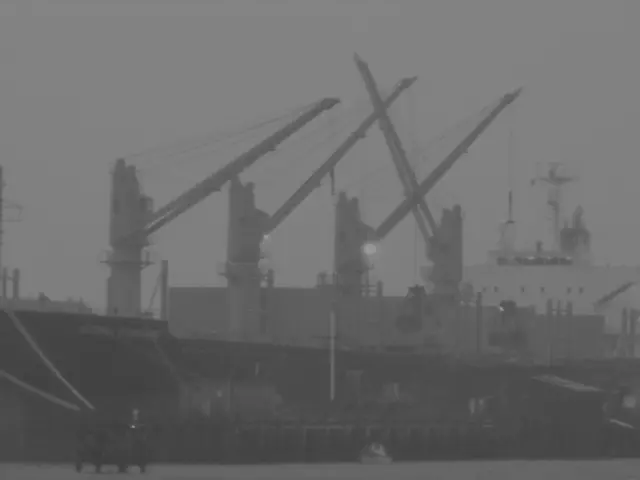Enthusiastic researchers eyeing lithium extraction in Lower Saxony. - Researchers Upbeat about Lithium Extraction in Lower Saxony
Cracking Open Lithium Reserves in Lower Saxony: A Promising Pilot Project
Excitement buzzes around a pioneering endeavor to mine lithium, a critical component in electric vehicle batteries, deep within Lower Saxony's Lüneburg Heath. For three weeks until late May, scalding hot water will be drawn from a staggering 3,800 meters below ground and funneled through an extraction facility. The mission is clear: to shrink our carbon footprint.
"Lithium extraction in Lower Saxony could boast a minimal ecological footprint," asserted André Stechern, principal investigator of the "Li+Fluids" research project, during a tour of the Horstberg drilling site in Eimke (district of Uelzen). Stechern outlined that this project would potentially lessen dependence on overseas supply chains, currently reliant on Australian, Chilean, and Chinese mining operations or vast saltwater lakes.
The Faded Glory of an Old Gas Well and a New Promise
The Federal Institute for Geosciences and Natural Resources (BGR), managing the research project and repurposing a failed gas drilling site for lithium extraction, anticipates recovering 70% or more of the lithium from a high concentration of 190 milligrams per liter. The BGR, under the umbrella of the Ministry of Economics, funds this forward-thinking project.
"The choice is between swiftly extracting more lithium or allowing it to mix with an ion sieve for extended periods," stated Stechern, outlining several strategies under consideration. "An aluminum-based sieve seems the most viable option based on preliminary tests."
Nevertheless, the lithium reserves unearthed in Germany alone would not satisfy the burgeoning demand, according to the BGR. Combined with recycling, the impact could be substantial in lessening our reliance on imports.
The World's Insatiable Appetite for Lithium
Lithium aspires great importance in the global landscape. The BGR anticipates that by 2030, worldwide demand could surpass current production by a staggering threefold, primarily driven by the insatiable demand for lithium-ion batteries in electric mobility. The potential for extraction in the North German Basin, stretching from the Ems to Rostock, fills experts with optimism.
- Lithium
- Lower Saxony
- Lüneburg Heath
- Pilot project
- E-mobility
- Uelzen
Peering Behind the Scenes:
The quest for improved lithium extraction processes has taken center stage in the broader conversation around sustainable metal supply[1]. The goal is to make local extraction more cost-effective and efficient, thereby lessening our dependence on overseas supply lines.
Tomorrow's Giant Leap:
By 2030, global demand for lithium is projected to skyrocket due to its increasing use in electric vehicle batteries and renewable energy technology[1]. The success of pilot projects, including those potentially cropping up in regions like Lower Saxony, could aid in meeting the growing demand and slashing import reliance if scaled up effectively.
- The pilot project in Lower Saxony's Lüneburg Heath aims to lessen Germany's reliance on overseas lithium supply chains, particularly those in Australia, Chile, China, and saltwater lakes.
- The BGR-led research project in Lower Saxony, utilizing a repurposed gas drilling site, anticipates recovering a significant percentage of lithium, which could contribute to increased local production and reduced dependence on imports.
- The surge in global demand for lithium by 2030, mostly driven by electric mobility and renewable energy technology, presents an opportunity for successful pilot projects like the one in Lower Saxony to lessen reliance on imports and help meet the growing demand.




